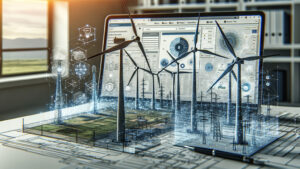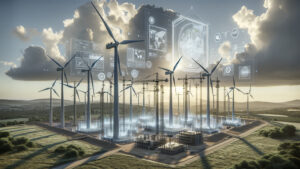 Introduction to BIM: What Is It?
Introduction to BIM: What Is It?
Before diving into the details, it’s essential to clarify what Building Information Modeling, or BIM, entails. This advanced method integrates physical and functional characteristics of building projects into digital models, allowing for a comprehensive understanding of how structures will look and function under various conditions.
BIM: Revolutionizing Wind Farm Design
The adoption of BIM technology in the wind farm sector opens up new possibilities. This method enables designers and engineers to create detailed digital replicas of turbines and entire farms, predicting challenges and optimizing processes before physical construction begins.
Project Optimization Through BIM
BIM allows for the detailed analysis of every component of a wind farm at the design stage, identifying the most efficient solutions in terms of energy efficiency, safety, and environmental impact.
Cost and Time Reduction
BIM transcends 3D modeling to become a tool for reducing costs and project timelines. By detecting potential issues early, BIM helps avoid many errors that could arise during construction.
Sustainable Development and BIM
In an era of increasing ecological awareness, BIM is a key tool in designing sustainable wind farms. It enables precise planning of material and energy use, contributing to higher efficiency and minimal environmental impact.
 BIM and the Future of Wind Farms
BIM and the Future of Wind Farms
The use of BIM in wind farm design is a step towards a future where every aspect of construction is meticulously planned and optimized. This ensures that wind farms can be more efficient, economical, and environmentally friendly.
Conclusion: BIM Is the Future
In summary, BIM is not just a technology of the future but is already present in wind farm design. Its capabilities allow us to create more efficient, cost-effective, and eco-friendly renewable energy sources. BIM is the key to a better future in renewable energy.




